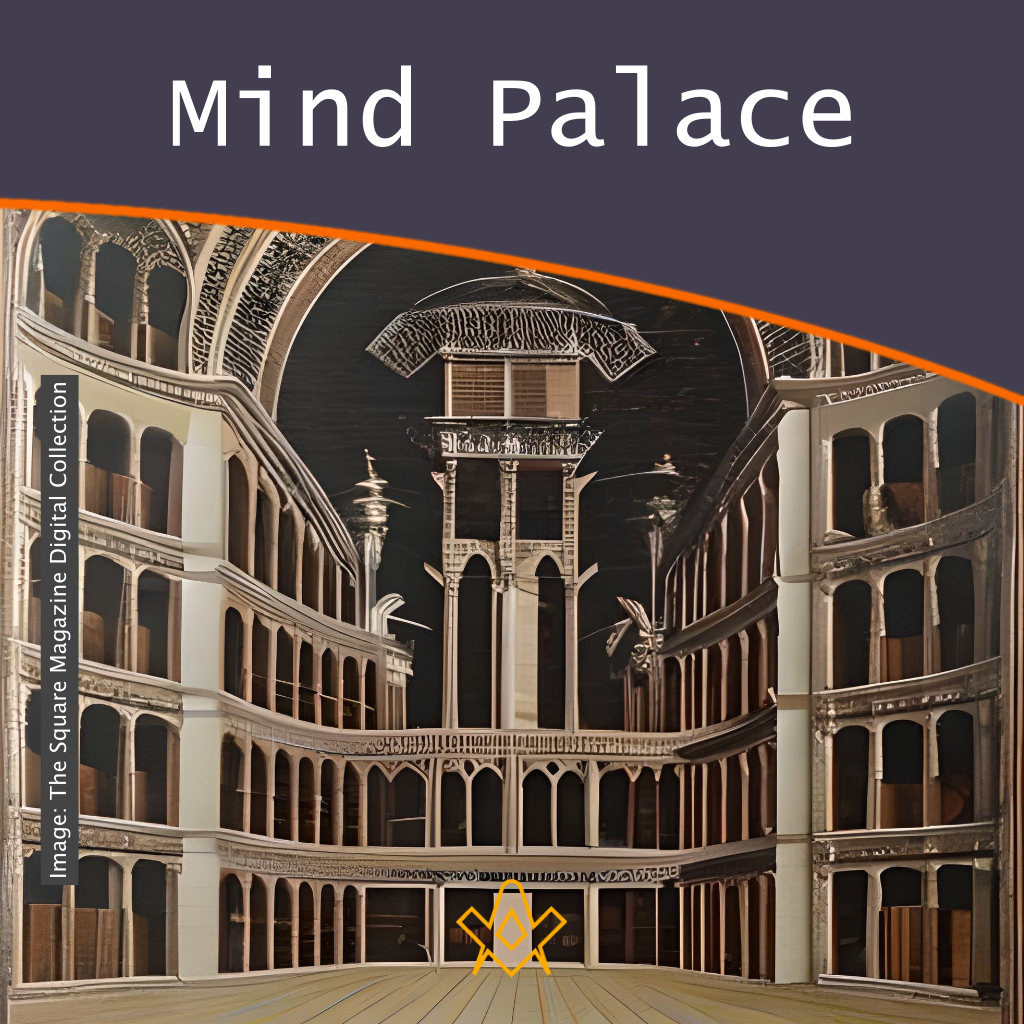How would your life change if you could remember anything and everything?
If I were able to remember anything, my life would change significantly.
I would be able to recall and retain a vast amount of information and experiences, which would likely enhance my knowledge and capabilities in many areas.
It could also potentially allow me to better understand and learn from my past mistakes and successes, and make more informed decisions in the present and future. However, it is also possible that the burden of such a vast amount of memories could be overwhelming or challenging to manage.
What is a “Mind Palace”?
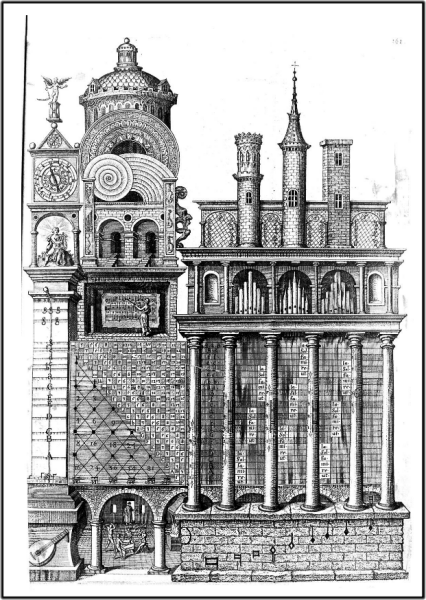
Utriusque cosmi maioris scilicet et minoris metaphysica, physica atque technica historia … [Tractatus secundus de naturae simia seu technica macrocosmi historia] – translation; The metaphysical, physical and technical history of both the greater and the lesser cosmos. [The second treatise on the nature of the apes, or the technical history of the macrocosm] c. 1617-1618. Fludd, Robert (1574-1637)
IMAGE LINKED: Wellcome Collection Attribution 4.0 International (CC BY 4.0)
A “mind palace”, also known as a “memory palace”, is a technique for memorizing and recalling information.
It involves constructing a mental representation of a physical location, such as a building, or a portion of a city, and then using the visual and spatial associations of that location to store and recall information.
To use the mind palace technique, you first create a mental image of a place that you are familiar with, such as your home or office.
Then, you visualize placing the information you want to remember at specific locations within that place.
When you want to recall the information, you simply mentally “walk through” the mind palace and retrieve the information from the locations where you placed it.
The mind palace technique can be a powerful tool for improving memory and recall, especially for remembering lists of items or sequences of information.
Who invented the Mind Palace?
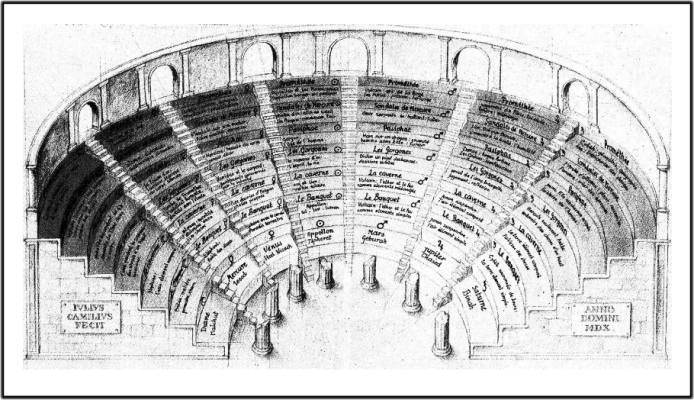
Giulio Camillo Delminio (1480-1544) “The Theatre of Memory” L’idea del theatro, c. 1550
IMAGE LINKED: wikimedia Attribution 4.0 International (CC BY 4.0)
The mind palace technique, also known as the method of loci, has been used by memory experts and orators for thousands of years.
It was first described in detail by the ancient Roman orator and rhetorician Cicero, who wrote about using the method of loci to help him prepare for speeches.
The technique was also used by the ancient Greek poet Simonides of Ceos, who is said to have used the method to remember the names of all the guests at a banquet after the building in which the banquet was held collapsed, killing everyone inside.
In more recent times, the mind palace technique has been popularized by the character Sherlock Holmes in the Sherlock Holmes stories by Sir Arthur Conan Doyle, and by the television show “Sherlock”.
However, the technique itself is much older and has been used by memory experts and orators for centuries.
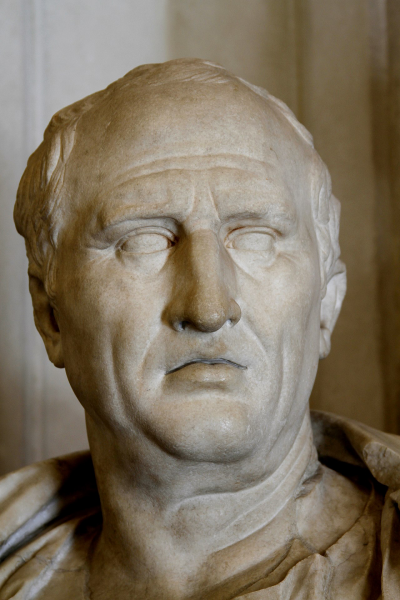
Bust of Cicero, Palazzo Nuovo, Rome By José Luiz Bernardes Ribeiro,
IMAGE LINKED: wikimedia Attribution 4.0 International (CC BY 4.0)
How does the Mind Palace work?
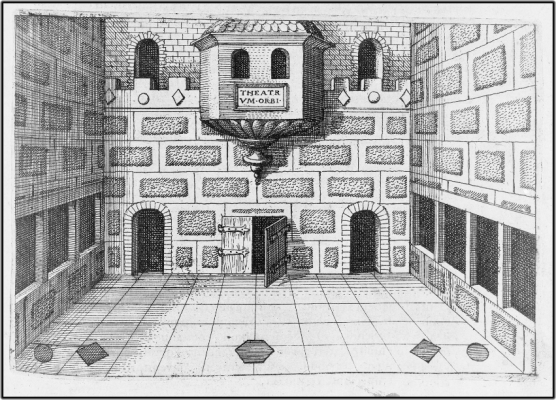
Ars Memoriae, Robert Fludd, c. 1619-21
IMAGE LINKED: Wellcome Collection Attribution 4.0 International (CC BY 4.0)
The mind palace technique works by taking advantage of the way the human brain stores and retrieves memories.
The brain is highly efficient at remembering visual and spatial information, such as the layout of a room or the location of objects within it.
When you use the mind palace technique, you create a mental representation of a physical location and then associate the information you want to remember with specific locations within that place.
For example, you might visualize placing a particular piece of information on a kitchen counter, or in a specific drawer in a desk.
To recall the information using the mind palace technique, you simply mentally “walk through” the mind palace and retrieve the information from the locations where you placed it.
The more vividly you can visualize the mind palace and the information within it, the easier it will be to recall the information later.
The mind palace technique can be particularly effective for remembering lists of items or sequences of information, because it allows you to create a mental “map” of the information that you can easily follow.
How to use a Mind Palace to remember someone’s name
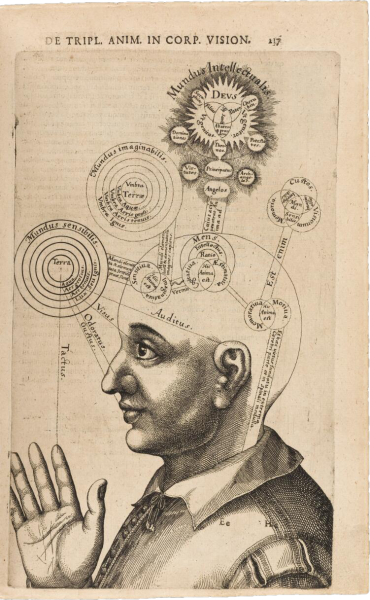
Ars Memoriae, Robert Fludd, c. 1619-21
IMAGE LINKED: Wellcome Collection Attribution 4.0 International (CC BY 4.0)
I met someone new at a party and immediately forgot their name. It was embarrassing, and I didn’t want it to happen again. That’s when I remembered hearing about the mind palace technique for improving memory. I decided to give it a try.
First, I needed to create a mind palace. I chose my house as the location for my mind palace because I was familiar with every room and could easily visualize it in my mind.
Next, I needed to associate the person’s name with a location within my mind palace. I decided to place their name on the front door, because that’s where I would see it when I first enter my house.
I closed my eyes and visualized my house in my mind. I saw the front door and imagined the person’s name written in large letters on it. I repeated their name out loud a few times to reinforce the association in my mind.
Over the next few days, I practiced visiting my mind palace and seeing the person’s name on the front door every morning and evening. Each time, I made sure to say their name out loud to further strengthen the association.
A week later, I saw the person again at another party. As I approached them, I mentally “walked” through my mind palace to the front door and retrieved their name from the location where I had placed it.
“Hi, it’s nice to see you again,” I said, confidently recalling their name. “How have you been?”
The person seemed impressed and thanked me for remembering their name. I smiled and told them about the mind palace technique and how it had helped me improve my memory.
From then on, I made it a habit to use the mind palace technique to remember important information, such as names, dates, and lists. It became a valuable tool that helped me in both my personal and professional life.
I was grateful to have discovered the mind palace technique and was glad that I had taken the time to learn and practice it. It was a simple yet powerful way to improve my memory and make a good impression on others.
How to use a Mind Palace with silly, scary or shocking techniques
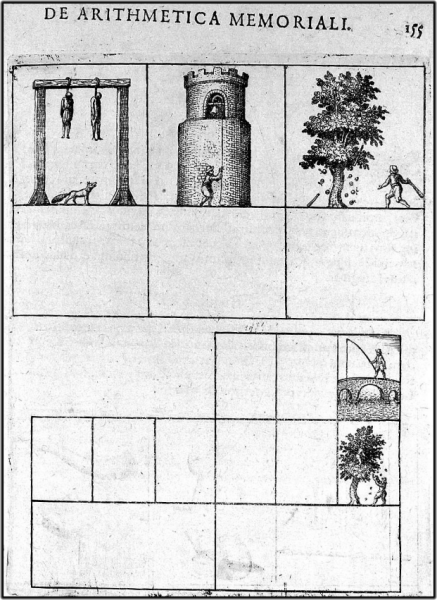
Utriusque cosmi maioris scilicet et minoris metaphysica, physica atque technica historia … [Tractatus secundus de naturae simia seu technica macrocosmi historia] – translation; The metaphysical, physical and technical history of both the greater and the lesser cosmos. [The second treatise on the nature of the apes, or the technical history of the macrocosm] c. 1617-1618. Fludd, Robert (1574-1637)
IMAGE LINKED: Wellcome Collection Attribution 4.0 International (CC BY 4.0)
One way to remember information using the mind palace technique is to associate the information with silly, scary, or shocking imagery.
This can help to create a strong emotional connection to the information, which can make it easier to recall later.
For example, let’s say you are trying to remember a list of groceries that you need to buy. Instead of simply visualizing the items on a grocery store shelf, you could try using silly, scary, or shocking imagery to make the information more memorable.
For the item “bananas,” you could visualize a giant banana monster chasing you through your mind palace. For “milk,” you could imagine a ghostly cow floating in the air and mooing at you. For “eggs,” you could see a giant egg with teeth chasing you down the hallway.
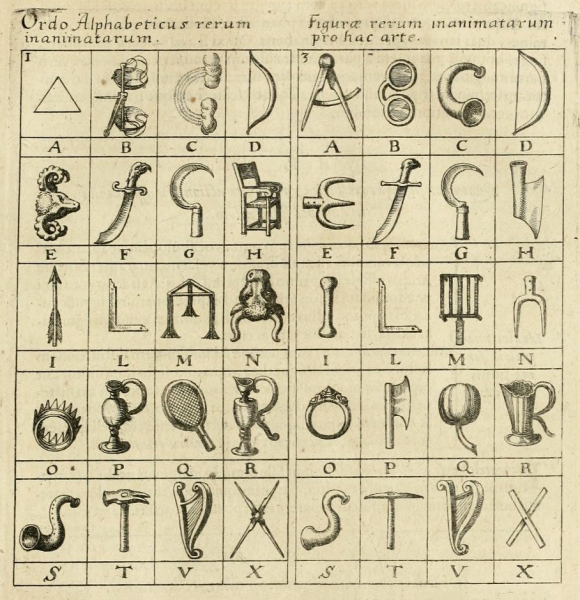
Robert Fludd’s “Memory Tricks” (1617) from Utriusque Cosmi … Historia.
IMAGE LINKED: Wellcome Collection Attribution 4.0 International (CC BY 4.0)
By using these types of imaginative and memorable associations, you can make the information more memorable and easier to recall later.
Just be sure to use imagery that works for you and that you find emotionally engaging, as this will help to create stronger connections in your memory.
5 Beginner Books on the Mind Palace

The Memory Workbook: Breakthrough Techniques to Exercise Your Brain and Improve Your Memory
By: Douglas J. Mason and Michael Lee Kohn
This book offers you an array of innovative techniques, exercises, games, and puzzles that will help you see and understand how your memory works at the same time that you are stretching your memory muscles.
Learn how to maximize the receptiveness of your senses, focus on what is important to you, rehearse and imprint information you want to save, and use visual and sensory imagery to deepen your memory experience.
The authors also incorporate the latest scientific findings on memory functioning, providing a wealth of information about medications, memory disorders, and resources for additional help.

The Memory Book: The Classic Guide to Improving Your Memory at Work, at School, and at Play
By: Harry Lorayne and Jerry Lucas
Unleash the hidden power of your mind
It’s there in all of us. A mental resource we don’t think much about. Memory. And now there’s a way to master its power. . . .
Through Harry Lorayne and Jerry Lucas’s simple, fail-safe memory system, you can become more effective, more imaginative, and more powerful at work, at school, in sports, and at play.
• Read with speed and greater understanding.
• File phone numbers, data, figures, and appointments right in your head.
• Send those birthday and anniversary cards on time.
• Learn foreign words and phrases with ease.
• Shine in the classroom and shorten study hours.
• Dominate social situations: Remember and use important personal details.
Begin today. The change in your life will be unforgettable

The Mind Map Book: How to Use Radiant Thinking to Maximize Your Brain’s Untapped Potential
By: Tony Buzan
This book introduces the mind map technique, which is a visual way of organizing and representing information. It can be used in conjunction with the mind palace technique to help improve memory and recall.
“The Mind Map Book”, written by Tony Buzan, is a comprehensive guide to using mind maps as a tool for improving your thinking and problem-solving skills. A mind map is a visual representation of information, ideas, or concepts, arranged in a way that allows you to see the connections between them. Buzan argues that mind mapping is an effective way to tap into the full potential of your brain, as it allows you to organize and analyze information in a more intuitive and creative way.
One of the strengths of The Mind Map Book is that it is full of practical tips and techniques for creating and using mind maps. Buzan provides clear, step-by-step instructions for constructing mind maps, as well as tips on how to use them effectively in different situations. He also includes a variety of examples to illustrate different mind map techniques and how they can be applied.
Another notable aspect of the book is the way it encourages readers to think creatively and to challenge their preconceived notions. Buzan encourages readers to embrace their natural curiosity and to use mind maps as a tool for exploring new ideas and concepts. He also emphasizes the importance of visualization in the mind mapping process, as it allows us to see connections and patterns that might not be immediately apparent when we think in a more linear fashion.
Overall, The Mind Map Book is a valuable resource for anyone looking to improve their thinking and problem-solving skills. Whether you are a student, a business professional, or simply someone who wants to become more organized and efficient, this book has something to offer. Buzan’s writing is clear and engaging, and his insights into the mind mapping process are both practical and thought-provoking. I would highly recommend this book to anyone interested in tapping into the full potential of their brain.

Moonwalking with Einstein: The Art and Science of Remembering Everything
By: Joshua Foer
This book tells the story of the author’s journey to become a memory champion and explores the science behind memory and the mind palace technique.
What are the key lessons in the book “Moonwalking with Einstein: The Art and Science of Remembering Everything”
“Moonwalking with Einstein” is a book by Joshua Foer that explores the world of memory and how to improve it. Some key lessons from the book include:
Memory techniques, such as the “memory palace,” can be used to improve your ability to remember information.
Memory is not fixed, and you can improve your memory with practice and effort.
The act of trying to remember something can be more important than the actual act of remembering it.
Our memories are fallible and can be influenced by various factors, including our emotions and our environment.
The process of encoding information into your memory is essential to being able to recall it later.
Memory is an important part of who we are and how we perceive the world.

SuperMemory: The Revolutionary Technique to Enhance Your Memory and Learning Ability
By: Sheila Ostrander and Lynn Schroeder
This book provides a comprehensive guide to improving memory using a variety of techniques, including the mind palace technique. It includes exercises and case studies to help readers practice and apply the techniques.
Recent Articles: skill series
 Freemasonry and Reskilling in the age of AI The article explores the challenges and strategies organizations face in reskilling their workforce in the era of automation and artificial intelligence. It highlights the need for companies to view reskilling as a strategic imperative and involve leaders and managers in the process. The article also emphasizes the importance of change management, designing programs from the employee's perspective, and partnering with external entities. |
 Ten Central Commandments or Principles of Freemasonry Embrace the wisdom of Freemasonry's teachings in your personal journey towards self-improvement and stronger leadership. By upholding virtues of integrity, compassion, and respect, and uniting these with a commitment to continuous learning and social responsibility, inspire change. Transform yourself and the world around you, fostering a legacy of positivity and enlightenment. |
 Freemasonry: A Guide to Fatherhood In the sacred halls of Freemasonry, fathers discover a hidden power to transform their parenting journey. With its timeless values, supportive community, and life-enriching teachings, Freemasonry empowers fathers to provide a moral compass, foster self-improvement, build stronger connections, and embrace the confidence and wisdom needed to navigate the complex realm of fatherhood. |
 Courage as a core value in Freemasonry Freemasonry, a revered fraternity, prioritizes virtues like honesty and charity. However, courage is foundational. From Plato to Maya Angelou, courage is vital for other virtues. Freemasonry's teachings, referencing events like Gettysburg, emphasize diverse courage forms. In today's divided world, Masons promote and exemplify courage, understanding its importance in facing challenges. |
 How Freemasonry Cultivates Ideal Entrepreneurial Traits Freemasonry's cryptic rituals hold timeless lessons for building entrepreneurial greatness. Through tests of passion, vision and skill, Masonic teachings forge ideal traits like grit, creativity and alliance-making needed to seize opportunity and elevate enterprises. The right commitment unlocks code for entrepreneurial success. |
 What you see praiseworthy in others "What you see praiseworthy in others, carefully imitate, and what in them may appear defective, you will in yourself amend". This passage of Masonic ritual (Taylors Working, Address to the w |
 How to Learn Ritual with a Learning Disorder So what do you do when faced with that little blue book? Most Masons when first looking at the ritual book can understandably be fazed – the tiny print, the missing words, the questions and answers! Learning ritual can be a challenging task for anyone, especially individuals with learning disorders, but it is not impossible. Here are some tips to help make the process easier. |
 A "mind palace", also known as a "memory palace", is a technique for memorizing and recalling information. How would your life change if you could remember anything and everything? Discover the 'Mind Palace' and all will be revealed. |
 What is leadership and who does freemasonry help develop those skills needed to be a better leader |
 A story of the 'Ruffians' – those individuals whose paths cross ours, who feel entitled to seize and consume the property of others that they have not earned. A lesson to build character to be a better citizen of the world. |
 Now we are back in the Lodge room once again, maybe it is time to review how we learn and deliver ritual and look at different ways of improving that process. |
 Making an advancement in Masonic Knowledge can become far easier when you 'learn how to learn'. |
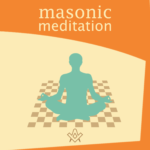 Learn how to practise Masonic meditation in a busy world with all its care and employments |
 Struggling to learn your ritual? Become a 5-Minute Ritualist with the aid of a book of the same name. |
 Day in the life of a Freemason As we start a new year, maybe start it with a new habit? |
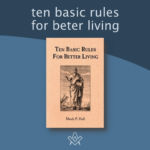 Ten Basic Rules For Better Living Ten Basic Rules For Better Living by Manly P Hall |
 How can we use masonic leadership skills to avoid confrontational situations? |
 How the Trivium is applied to Critical Thinking - {who, what, where, when} - {how} - {why} |
 The Seven Liberal Arts - why 'seven', why 'liberal', why 'arts'? |
 How to improve your public speaking skill with 6 techniques |
 Do you need to speak in public, or present Masonic ritual without notes ? |
 What are logical Fallacies and how to spot them |
 Share one easy tip to learn masonic ritual; Some good tips from Facebook followers |
 How can we use the 7 secrets of the greatest speakers in history |
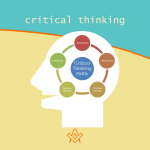 What is a critical thinker and what are their characteristics? |
 Share one personal skill Freemasonry helped you to improve? How can we make practical use of the lessons taught in Masonic writings? |
 An introduction to the art of public speaking - speak with confidence |
 Seven Liberal Arts and Sciences What do you know about Seven Liberal Arts and Sciences |
 Three Words That Will Change Your Life This article discuss a common situation found in many lodges - a difficulty in holding a conversation with a stranger. |
 Al - Khwarizmi live c750 - c820 is credited as being the father of Algebra, being asked what is Man, give his answer in an algebraic expression |
masonic knowledge
to be a better citizen of the world
share the square with two brothers

click image to open email app on mobile device



